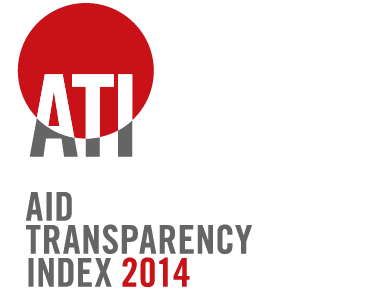Organisation performance by type and size
As a group, bilaterals continue to perform poorly with an average score of 31%, compared to 61% for multilateral donors. Over two-thirds of bilaterals are placed in the poor or very poor categories, with just four – Canada, DFID, MCC and Sweden – in the very good and good categories. EU Member States continue to perform poorly as a group, with an average score of 28%, up by four percentage points from 2013. However, some bilaterals have made progress in 2014. This includes four of the biggest improvers in terms of performance – France MAEDI, PEPFAR, Spain and Switzerland – which have all moved from the very poor to the fair performance category; as well as Finland and Ireland, which have moved from poor to fair. In 2013, 15 bilaterals were publishing information to the IATI Standard; this has increased to 22 in 2014.
It is also noticeable that 10 of the 22 organisations in the very poor category have small development cooperation budgets (under USD 100mn). Their poor performance could be attributable to a variety of reasons, including insufficient investments in data collection and publication systems and less external scrutiny compared to organisations with larger budgets and bigger public profiles. Nevertheless, the lack of information on activities funded by these donors has significant implications as it undermines efforts towards improved coordination and accountability.
Multilaterals as a group continue to perform well, with 11 of the 17 placed in the very good or good categories. The average score for multilaterals of 61% is considerably higher than the Index average of 39%. However, scores for multilaterals range from 25% (EBRD) to 91% (UNDP) with five of the 17 – UN OCHA and four international financial institutions – the EBRD, EIB, IFC and IMF – scoring less than 50%. Of the 17 multilaterals, 13 publish to the IATI Standard, compared to fewer than half of the 50 bilaterals.
As in 2013, IFIs as a sub-set of multilaterals perform better than bilaterals but not as well as multilaterals overall. There is an increasing gap between the performance of multilateral development banks – the AsDB, AfDB, IADB and World Bank IDA – all of which are placed in the good or very categories, and the remaining IFIs that are yet to begin publishing to IATI.
As in previous years, larger organisations score better than those with smaller development cooperation budgets. The average score of large and very large organisations is 56%, while the average of small and very small organisations is just under half that at 27%. Some small organisations, such as Finland, Ireland and New Zealand, do appear higher up in the ranking and are placed in the fair and good categories. Of the total volume of aid provided by all donors included in the ATI, 38% scores as ‘very good’ or ‘good’ in transparency terms, a significant increase of 18 percentage points since 2013. This reflects the increase in the amount of information being published in more accessible, machine-readable formats by the top-ranking organisations.
